Your child's asthma medication
Your child will be started on treatment based on their asthma symptoms.
Asthma treatments only work if they are taken as advised by your doctor or asthma nurse.
The aim of your child’s treatment is to prevent asthma attacks and day and night symptoms. It should stop them from needing to use their blue reliever inhaler frequently. Well controlled asthma means your child can play sport and keep active just like their friends.
Your doctor or asthma nurse will change your child's asthma medication depending on their symptoms. They may use a stepwise approach.
Your child should have an asthma review at least once a year with their doctor or nurse. They will be given an asthma action plan.
Preventer Treatment
This medication is not used to treat an asthma attack.
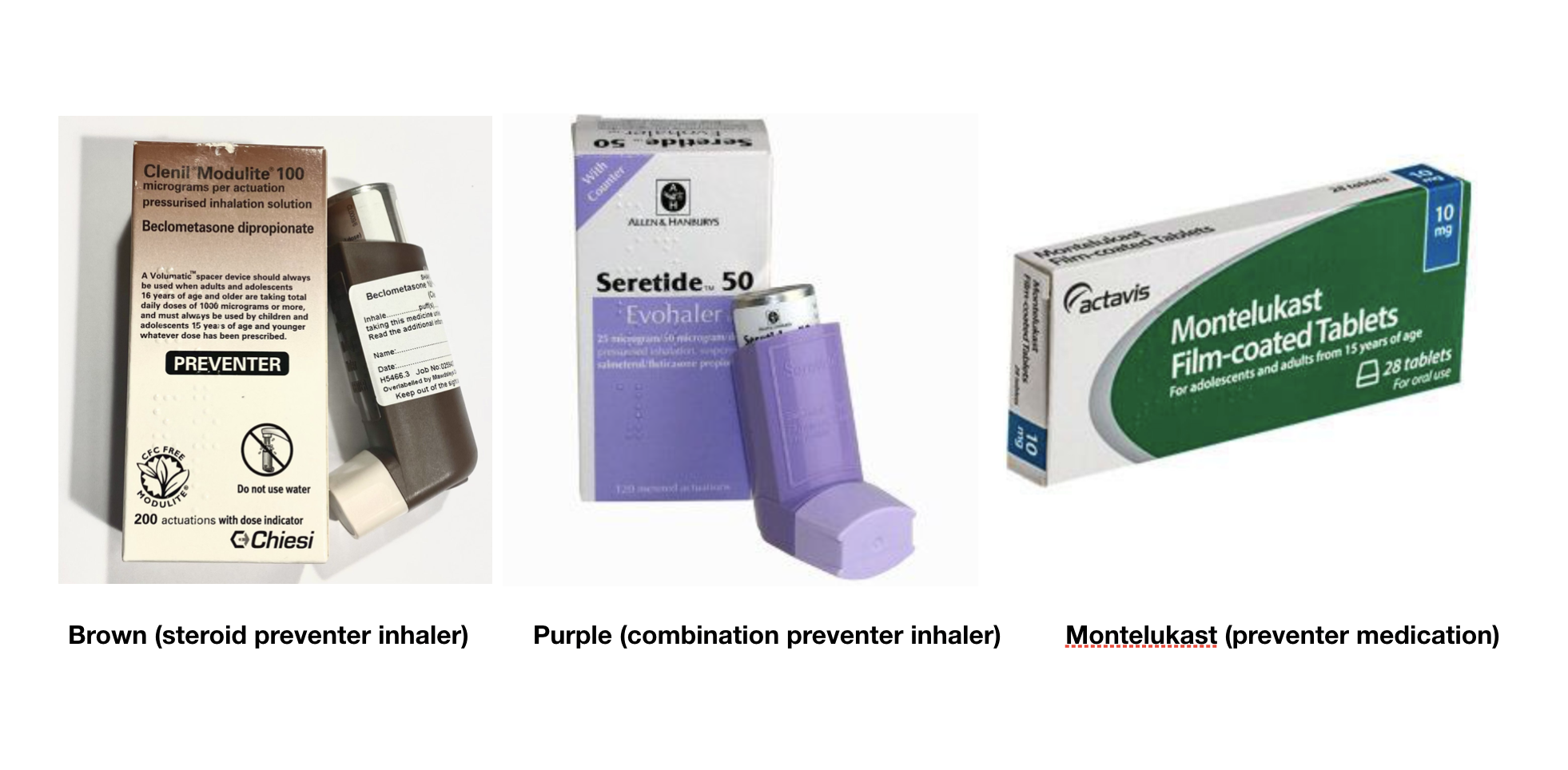
Your child may be started on a preventer treatment to help manage their asthma.
There are 3 types of preventer:
- Steroid only inhaler which reduces the inflammation (swelling) of the airways
- Combination inhalers which include a steroid and a long acting airway muscle relaxing drug
- Medications for example montelukast
There are different coloured preventer inhalers. The most common is brown. Preventer inhalers will never be blue.
Preventer treatments may take a few weeks to start working. Your child must keep taking them every day.
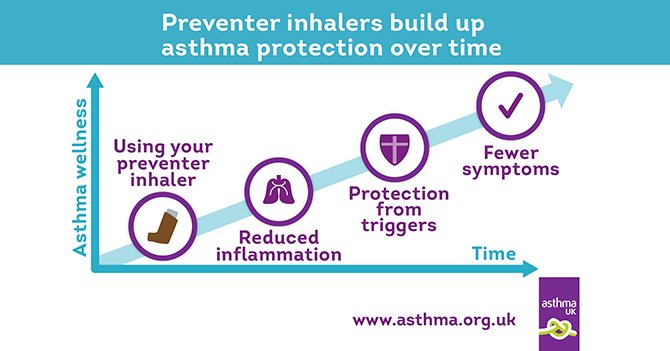
If taken everyday preventer medication should:
- Reduce sensitivity to asthma triggers
- Reduce the use of their blue reliever inhaler
- Improve sleep at night
- Improve activity through the day
Preventer treatments do not need to be taken to school. They are usually given in the morning and/or evening. We advise your child to brush their teeth after using their preventer inhaler. This is to prevent oral thrush. To help you remember, you can set reminders or keep the inhaler near your child’s toothbrush.
It is important to order your child's preventer medication on time every month so they don't run out.
With the right treatment your child can lead a normal life. There are some myths about the treatment of asthma. Please watch this video to find out more about these myths.
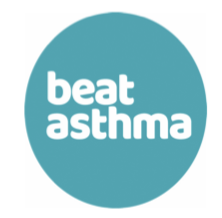 Read more information by Beat Asthma on asthma inhalers, treatments and medications
Read more information by Beat Asthma on asthma inhalers, treatments and medications
Relievers (salbutamol inhaler)
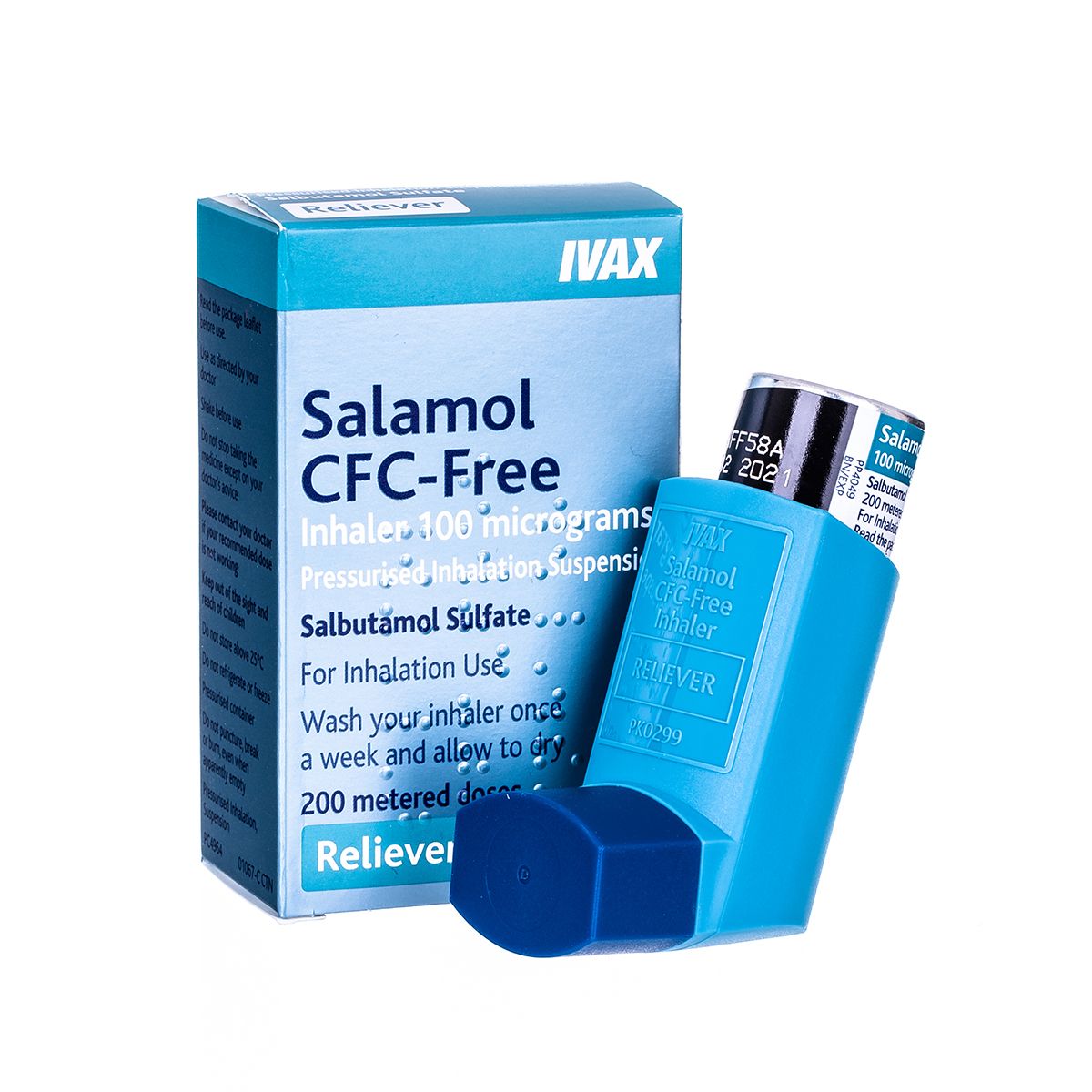
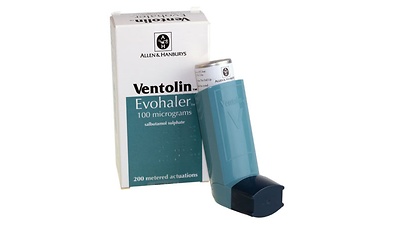
Your child's reliever inhaler will be blue. They come in different shapes and sizes. It contains a medication called salbutamol. This medication relaxes and widens the muscles of the airways. This opens up the airways making it easier to breathe. It works fast and can last up to 4 hours.
Your child should carry their blue reliever inhaler and spacer with them at all times in case of an emergency. School or nursery should also keep a spare blue inhaler and spacer. You can ask your GP to give you 2 inhalers and spacers for your child so you can keep one with your child and one at school or nursery.
Relievers can cause tremors (shakes) and make your child’s heart beat faster for a short period of time. These side effects are normal and harmless. If needed your child should still use their reliever.
If your child is using their blue inhaler more than 2 times a week you should speak to your doctor or asthma nurse for an urgent review.
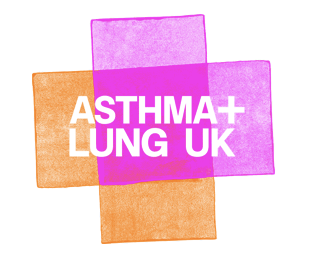 Call the Asthma + Lung UK helpline on 0300 222 5800 to speak to someone about anything from managing your child’s asthma to what to do if you are planning a trip away.
Call the Asthma + Lung UK helpline on 0300 222 5800 to speak to someone about anything from managing your child’s asthma to what to do if you are planning a trip away.
Spacers
Your child must always use a spacer to get the right amount of medication into their lungs.
Spacers are empty plastic tubes. They attach to your child’s inhaler at one end. They have a mouthpiece or mask at the other end. If your child does not use their spacer they will not get the best from their prescribed medication.
There are lots of different sized and coloured spacers depending on your child’s age. It is very important they have the correct spacer.
Please see the video below to find out which spacer should be used and why.
Spacers are available on prescription or you can buy them from your local pharmacy. Please speak to your doctor or asthma nurse if your child needs a spacer or if you feel that they have the wrong one for their age.
It is vital that your child uses their inhalers and spacer correctly
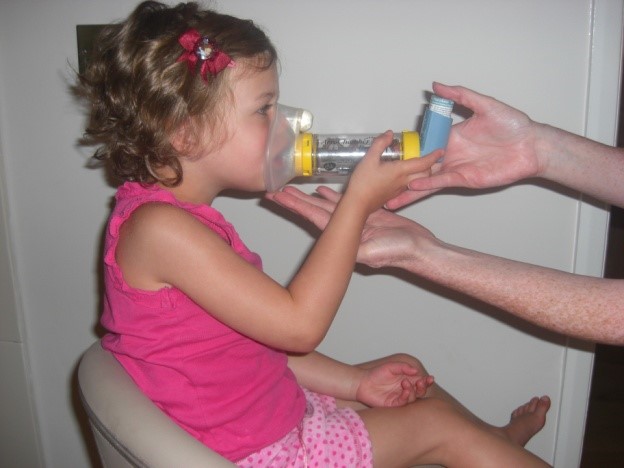
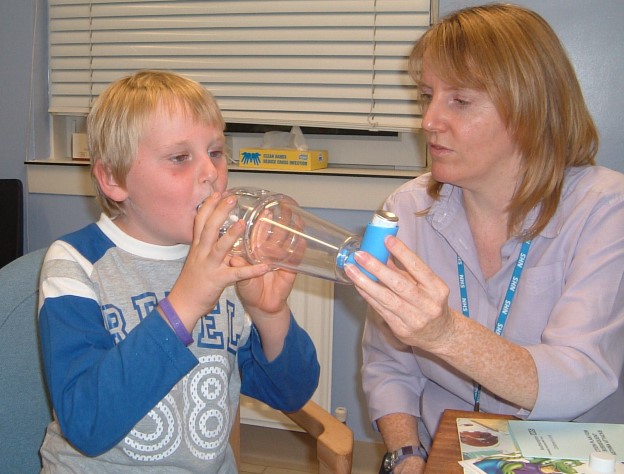
Choose the right sized spacer with mask (or mouthpiece if child is over 3 years with good technique and is not significantly short of breath).
1. Shake the inhaler well and remove cap
2. Fit the inhaler into the opening at the end of the spacer
3. Place mask over the child's face or mouthpiece in their mouth ensuring a good seal
4. Press the inhaler once and allow the child to take 5 slow breaths or slow count to 10 between each dose
5. Remove the inhaler and shake between every puff. Wait 30-60 seconds between puffs
Repeat steps 1 to 5 for each dose.
Watch the Asthma UK videos on how to use your child's inhaler and spacer correctly.
Speak to your asthma nurse or doctor if you are not sure if your child is using their inhaler and spacer properly.
Looking after your child's spacer
A spacer should be replaced every year. It may need to be replaced sooner depending on it's condition.
The spacer should be cleaned before use and once every month after that.
Make sure your spacer is stored correctly to keep it in good condition. It should be stored away from dust and liquids, in a plastic free sealed bag or purse. This is to avoid damage and stop a build-up of static that can affect delivery of the asthma medication.
You can make it fun and personalise the storage bag. This will make children more likely to carry and use it.




